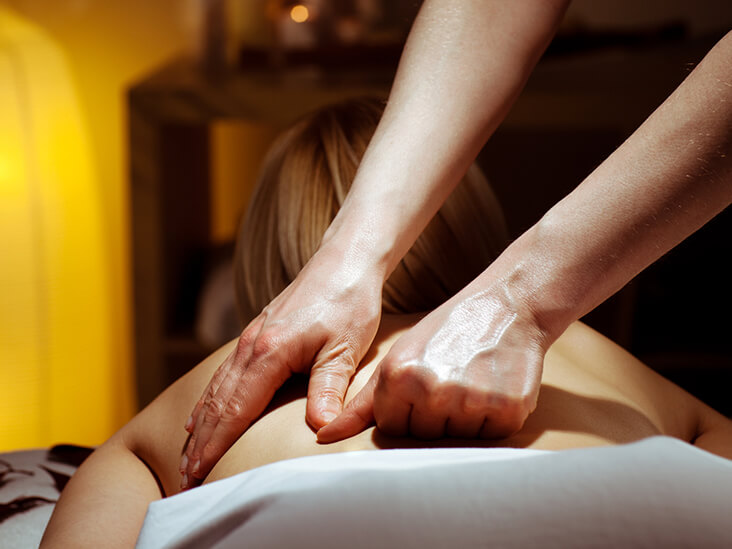There are many types of massage therapy you can get such as Swedish massage, which is popular among most people, it’s performed to energize the body and improve overall health. This kind of massage is performed by using actions such as percussion, kneading, vibrations, tapping, and rolling.

KAMPALA | LIFESTYLE UGANDA — There are many distinct types of massage therapy that provide astounding mental and physical health benefits (often referred to as therapeutic massage) whilst fulfilling different functions.
In this article, we’re going to discuss seven of the most popular types of massage therapy. We’ll also discuss how they differ, and how you can find the right massage therapy for you.
After reading this article, you can enjoy the benefits of massage therapy and make the right choice for massage.
In order to get the most out of your massage session, it is important to determine the goal of your appointments, such as pain reduction, stress reduction, or relaxation. Perhaps you would like a massage to complement your physical therapy routine.
Explain this to your massage therapist so that they may tailor the treatment to your needs.
1. Swedish Massage
Swedish massage is the most prevalent type of massage, which is characterized by long, kneading strokes paired with short, rhythmic tapping strokes. The type of pressure used for Swedish massage is light to moderate depending on your desired level.
Swedish massage was invented in the 1830s by a Swedish fencing instructor named Per Henrik Ling.
Swedish massage therapy uses five distinct strokes.
- Effleurage: a smooth, long stroke used to relax soft tissue
- Petrissage: kneading, rolling, and lifting movements
- Friction: deep, circular movements or wringing used to promote blood flow
- Tapotement: percussive, alternating taps done with cupped hands, fingers, or the edge of the hand
- Vibration: Swedish massage eliminates muscle tension and relaxes the entire body. It can help you heal from an injury.
2. Deep Tissue Massage

In the deep tissue massage, special care is taken with the target areas of your body where discomfort is present. It focuses on tight muscles (tense spots within the muscle fiber) as well as trouble spots deeper in muscles and connective tissue layers.
Massage therapists will employ slow, firm, more powerful strokes or friction to reduce pain caused by repetitive strain, postural issues, injuries, and tight or sore muscles. Even though the strokes are more vigorous, deep tissue massage should never hurt.
This sort of massage can be beneficial in the treatment of repetitive stress injuries, chronic pain disorders, and injuries that limit movement.
3. Hot Stone Massage

When performing a hot stone massage, stones (usually a volcanic rock called basalt that is heat-retaining) are placed on various parts of the body.
The massage practitioner may leave the stones in place or use them as massage implements.
This heat on the muscles of the body has a calming, healing effect, stimulates blood flow to the area, and loosens muscles. Hot stone massage can help treat muscular injuries by reducing stiffness and pain.
4. Sports Massage

As part of the sports massage program, the therapist will manipulate the soft tissues of the athlete’s body and will target specific muscle groups based on their sport.
Based on the athlete’s sport, sports massage manipulates the soft tissues of the body and targets specific muscle groups.
The use of sports massage varies by type of athlete but is typically used for preventing and treating injuries, relieving muscle soreness, correcting muscle imbalances, improving flexibility, and improving athletic performance.
Individuals who regularly participate in sports or exercise usually use sports massage to prevent and treat injuries, relieve muscle soreness, correct muscle imbalances, improve flexibility, and enhance athletic performance.
Sports massage uses faster strokes than Swedish massage and may incorporate compression, pressure point therapy, friction, and joint mobilisation.
5. Reflexology
Reflexology is based on the idea of ‘reflex regions’ on the hands and feet, the energy of which is thought to be linked to other parts of the body.
A massage therapist will utilise hand, thumb, and finger methods such as kneading and stroking on specific parts of the feet during a reflexology session. These methods encourage relaxation, healing, health, and well-being.
A reflexologist is a person who treats conditions by applying pressure to the reflex points on the hands and feet, whose energy is believed to be related to other parts of the body.
By applying pressure to reflex points, reflexologists aim to calm your nervous system and relieve discomfort.
6. Shiatsu Massage
Shiatsu massage originated in traditional Chinese medicine, but it is now a type of Japanese bodywork. Shiatsu is Japanese for ‘finger pressure.’ A massage therapist applies rhythmic, localised pressure to certain acupressure spots on the body with their fingers, palms, or elbows.
These spots are said to increase the body’s energy flow and restore balance. Shiatsu massage can help you gain energy, heal from an injury, and stimulate your digestive system.
In addition, Shiatsu massage, which is commonly used to ease stress and stress-related issues, can help with a number of ailments, including arthritis, sleeplessness, and sinus problems.
7. Thai Massage

In Thai massage, the massage therapist moves you in different positions during a session, stretching and assisting in yoga postures to align your body’s energy flow. Thai massage is always energizing because it includes passive stretching and massage.
Thai massage reduces tension and improves flexibility by using rhythmic compression of muscles, joint mobilisation, and acupressure.
It can help with back pain, balance issues, and even migraine symptoms. Before you begin, go over your medical history, amount of pain, and level of comfort with the massage therapist.
A massage therapy programme with a skilled massage therapy service provider may be just what you need, whether you have neck pain, sports injuries, or simply want to pamper yourself.
Last but not least, we hope you enjoyed reading this article about massage therapy types, but which is your favorite? Tell us in the comment section about your favourite.








